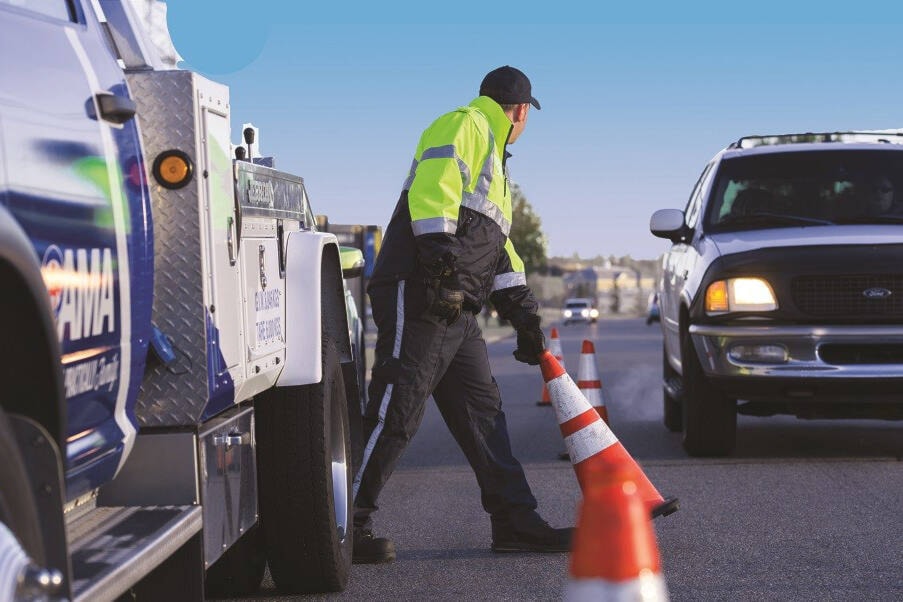After more than 40 years in the towing business, Larry Burt has lost track of the near-misses.
In an effort to improve safety, the province will allow tow trucks to mount flashing blue lights beginning next month as part of a pilot project.
“It couldn’t happen soon enough for me,” said Burt, who started Red Deer’s Trio Towing Professionals Ltd. in 1982. “There are far too many people who have been hit over the years.”
Part of the problem is there are so many vehicles sporting yellow lights or beacons people have stopped paying attention to them, he said.
“It seems to me amber or yellow beacons or flashing lights are almost meaningless these days.”
He often hears the fear in people’s voices who are broken down by the side of the road with traffic whizzing by, asking him to please hurry.
He admits the ‘welcome to my world’ thought has passed through his mind more than once as he heads out to help.
“People don’t understand until they’re in the middle of it, and it’s dangerous to say the least.”
Statistically, being a tow truck operator — which really means to be an emergency roadside responder — is one of the more dangerous jobs out there, said Burt.
North America-wide, a tow truck operator is killed every six days. That is five times the number of police, firefighters and emergency medical personnel such as paramedics, who are killed responding to roadside emergencies.
“People will slow down for red and blue beacons because they think it’s the police and they heed that. Two yellow beacons or three or nine — they don’t care.”
There is some evidence blue lights will help. When tow trucks in Saskatchewan introduced them there was a reduction in collisions and near-misses, said Burt, a long-time member of the Professional Towing Association of Alberta, which has lobbied for blue lights for years.
Trio has already ordered the lights for its 15 vehicles. While it has been introduced as a one-year pilot program, he hopes Alberta sees a similar reduction in incidents and blue lights will be approved permanently.
“I’m hoping the blue beacons are going to help, at least help move people over a little bit and have them understand there are human beings working there.”
Trio has four traffic control vehicles with additional lights, arrows and signs that can be parked ahead of the towing site. But it means bringing another driver along and in most cases customers don’t want to pay the extra cost.
So, that means for most calls there is one truck at a scene and an operator hoping other drivers are paying attention.
Dennis Gray, owner of Rocky Mountain House’s Gray’s Towing, hopes blue beacons make it safer for him and his drivers, but he wonders if it will last.
“The thing with the blue lights, it’s a great step, but over time people will become accustomed to it and they’ll go ‘Oh, it’s just a tow truck or a snowplow,” said Gray, who has operated a tow truck for 46 years.
Over the years, he has suggested that if people want to get an idea of what he and other tow truck operators go through to get a job as a flag person or other roadside worker to see what it’s like to feel like you are a target for careless drivers.
“The (safety) vest just gives them something to aim at,” he said with grim humour.
Gray believes to truly make it safer for tow truck operators the penalties need to be much harsher for blowing past them while they are on the job roadside.
Under the province’s Traffic Safety Act, drivers in the lane next to stopped emergency vehicles or town trucks must slow to 60 km/h or face double the normal speeding fines.
“I use the school bus as an example. People don’t pass a school bus because there is a big penalty involved and you lose half your demerits.”
Maybe if drivers faced a huge fine and risked losing their license attitudes might change, he believes.
